The Math of Runaway Warming
(Read the essay, or watch the 26 minute video version here in this little box, or on its Youtube page, or full-screen.)
Nature has been wounded too extensively to heal herself. Apocalyptic change has already begun, and our only hope of averting our own imminent extinction is a gamble on geo-engineering. This essay explains, in non-technical terms, aspects of global warming that are apparent to mathematicians like myself but not to most other people. In fact, this math apparently has even eluded many climatologists, whose predictions keep lagging behind their measurements.
 Some people imagine that a few humans will survive, perhaps with less technology, in the hotter world that is coming. I think they’re mistaken. Yes, the world has been hotter than this before, but the temperature hasn’t risen this fast before. It’s rising faster than plants and animals can adapt, and so species are disappearing at record speed, far faster than new species are arising. Species depend on other species for survival, so the ecosystem is growing fragile. If present trends continue, at some point the ecosystem will collapse, and we humans will all starve to death.
Some people imagine that a few humans will survive, perhaps with less technology, in the hotter world that is coming. I think they’re mistaken. Yes, the world has been hotter than this before, but the temperature hasn’t risen this fast before. It’s rising faster than plants and animals can adapt, and so species are disappearing at record speed, far faster than new species are arising. Species depend on other species for survival, so the ecosystem is growing fragile. If present trends continue, at some point the ecosystem will collapse, and we humans will all starve to death.
Guy McPherson is my favorite climatologist, because he doesn’t pull any punches when he explains our imminent extinction. But I don’t care for his summary phrase, “we’re done,” which may suggest to some people “don’t bother trying to avert ecosystem collapse, because you can’t.” I would prefer to say that
we’re still looking for a way to avert collapse. We haven’t found it yet, but we’re not dead yet, and we don’t know what answer we might still find. We have a responsibility to our children and to this planet, to keep trying.
I liked the philosopher Charles Eisenstein‘s recent definition of the miraculous. He said that a miracle is when something happens that most people had not believed possible. I’m still hoping for a miracle: that when people see that the old ideas aren’t working, then finally they’ll consider new ideas. I’m doing whatever I can to promote the ideas that I think we need.
Part 1. Two kinds of “more” (begin video at 2:24)
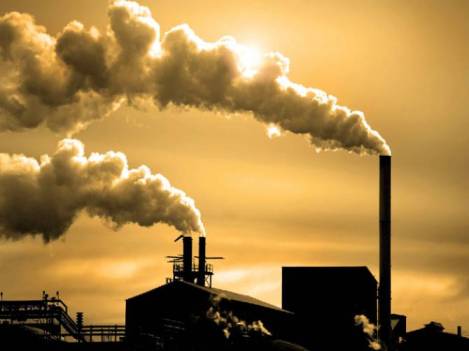 The central cause of warming is an excess of greenhouse gases in the earth’s atmosphere — CO2, CH4, etc. Greenhouse gases are a one-way trapdoor: they readily permit the passage of incoming visible sunlight, but they impede outgoing infrared light reflected from the earth. The result is like blankets on your bed: too few, and you’ll be cold; too many, and you’ll be hot.
The central cause of warming is an excess of greenhouse gases in the earth’s atmosphere — CO2, CH4, etc. Greenhouse gases are a one-way trapdoor: they readily permit the passage of incoming visible sunlight, but they impede outgoing infrared light reflected from the earth. The result is like blankets on your bed: too few, and you’ll be cold; too many, and you’ll be hot.
Our human activities have put greenhouse gases into the atmosphere far faster than nature can deal with them. In just a century we’ve burned fossil fuels that nature took millions of years to prepare. And our human-generated emissions rate is still rising, despite all our talk about reducing it. Moreover, by raising the temperature, we’ve triggered some natural processes that are also emitting greenhouse gases in increasing quantities; I’ll say more about those soon.
 Many people believe that reducing our carbon emissions will halt global warming. But it’s not that easy, and I’ll explain why. Yes, more carbon means more warming, but those are two different kinds of “more” — like the debt and the deficit, or like your odometer and your speedometer. Once those gases enter the atmosphere, they stay there a long time before breaking down. The current temperature is less directly related to how fast we’re currently adding carbon, and more directly related to the current total that has now accumulated.
Many people believe that reducing our carbon emissions will halt global warming. But it’s not that easy, and I’ll explain why. Yes, more carbon means more warming, but those are two different kinds of “more” — like the debt and the deficit, or like your odometer and your speedometer. Once those gases enter the atmosphere, they stay there a long time before breaking down. The current temperature is less directly related to how fast we’re currently adding carbon, and more directly related to the current total that has now accumulated.
Thus, to get back to a habitable planet, it’s not enough for us to slow our emissions. It’s not even enough for us to go carbon-neutral — that is, cut our net emissions rate to zero. We actually need to go carbon-negative, so that the net effect of our human activities is to take large amounts of carbon out of the atmosphere. Otherwise the temperature will continue rising rapidly, and will kill us all.
Part 2. Ocean and ice (begin video at 4:36)
The warming trend is only an average over the planet; in fact, some regions are temporarily experiencing colder weather. But the biosphere is absorbing far more heat than most of us land dwellers realize. That’s because most of the excess heat is going into the ocean, which is far more massive than the atmosphere. That heat is raising the ocean’s temperature by only a few degrees, but those few degrees — and the increasing carbonation of the water — are enough to kill some crucial parts of the ocean. In particular, the phytoplankton are dying. They were the foundation of the food chain. They were also nature’s chief mechanism for pumping excess carbon out of the atmosphere.
 Environmentalists have done a poor job of explaining the significance of the endangered polar bears. Perhaps some people think polar bears are cute and cuddly, but they’re not — actually, they’re ferocious carnivores. What environmentalists ought to be emphasizing is that polar bears are the “canary in the coal mine” — that is, their sensitivity to changes in their habitat makes their difficulties an early warning signal for difficulties the rest of us will face. The melting of polar ice, glacier ice, and mountaintop ice is not just a symptom of problems, but also a cause of problems. I’ll describe three of those.
Environmentalists have done a poor job of explaining the significance of the endangered polar bears. Perhaps some people think polar bears are cute and cuddly, but they’re not — actually, they’re ferocious carnivores. What environmentalists ought to be emphasizing is that polar bears are the “canary in the coal mine” — that is, their sensitivity to changes in their habitat makes their difficulties an early warning signal for difficulties the rest of us will face. The melting of polar ice, glacier ice, and mountaintop ice is not just a symptom of problems, but also a cause of problems. I’ll describe three of those.
First of all, the sea will rise, flooding our coastline cities, setting our economy back a century or two.
Second, ice is white, and it reflects sunlight into outer space. As the ice melts, it is replaced by darker water or land, which absorbs much of the sunlight. That brings more warming, which melts the ice faster. That’s a feedback loop; I’ll say more about that later.<
 And third, the ice has been absorbing heat, and thereby delaying other effects of the heat; we’ll begin to experience those other effects once the melting is done. It takes a great deal of energy to turn solid ice into liquid water. To understand that, here’s a little experiment you can do in your own home: Heat some ice cubes in a pot on your stove, with a constant stove setting, and stir the water that forms in the pot as the ice melts. That water will stay ice cold, at a constant 0°C or 32°F — it won’t rise in temperature at all as long as some ice remains. All the heat from the stove is going into turning ice into water. But once the last of the ice is gone, the water will get hotter rapidly; within a short time it will start to boil.
And third, the ice has been absorbing heat, and thereby delaying other effects of the heat; we’ll begin to experience those other effects once the melting is done. It takes a great deal of energy to turn solid ice into liquid water. To understand that, here’s a little experiment you can do in your own home: Heat some ice cubes in a pot on your stove, with a constant stove setting, and stir the water that forms in the pot as the ice melts. That water will stay ice cold, at a constant 0°C or 32°F — it won’t rise in temperature at all as long as some ice remains. All the heat from the stove is going into turning ice into water. But once the last of the ice is gone, the water will get hotter rapidly; within a short time it will start to boil.
And that’s where the world is today, minus the stirring spoon. Really, it’s astonishing how fast the polar ice, the glaciers, and the mountaintops are all melting now, after being frozen for so many millions of years. Once they’re all gone, watch out! The rest of the world will start heating up a lot faster.
Part 3. Nonlinearity (begin video at 8:02)
In 1990 the United Nations Advisory Group on Greenhouse Gases said (quote)
Temperature rise beyond one degree centigrade may elicit rapid, unpredictable and nonlinear responses that could lead to extensive ecosystem damage.
(end of quote) Well, now we’re beyond one degree, and we’re seeing those rapid, unpredictable, nonlinear responses. But what does that mean? In particular, what does “nonlinear” mean?
Mathematicians use the term “linear” for any process whose graph is nearly a straight line. That means the rate of change is nearly constant; that is, last year’s change is approximately the same as next year’s change. Most of our everyday experiences fit this description, and so we have difficulty imagining any other kind of behavior. When making predictions, we routinely use interchangeably the phrases “at the present rate” and “if current trends continue.”
But now nonlinear behavior has begun in our biosphere. We may still be able to spot and even predict some “current trends,” but they won’t be a continuation of the “present rate”; they’ll involve changing rates. I’m aware of three major kinds of nonlinearities: delays, tipping points, and feedback.
a. DELAYS (begin video at 9:40)
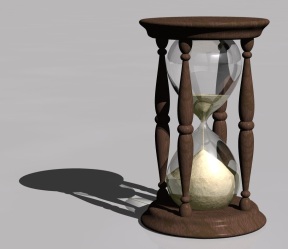 Most processes in our everyday experience respond quickly to changes in inputs. For instance, when you leave a room, you flip off the light switch, and the light goes out immediately; you don’t expect to have to wait a half century for the light to gradually fade away.
Most processes in our everyday experience respond quickly to changes in inputs. For instance, when you leave a room, you flip off the light switch, and the light goes out immediately; you don’t expect to have to wait a half century for the light to gradually fade away.
Consequently, most of us feel that “we don’t need to hurry — we’ll can deal with global warming after it becomes more visible.” But when we finally do begin some remedial action, it won’t have any effect for a long time. That’s because the excess carbon already in the atmosphere stays there for a long time before it breaks down.
Thus, in our need for remedial measures, it’s later than you think.
b. TIPPING POINTS (begin video at 10:30)
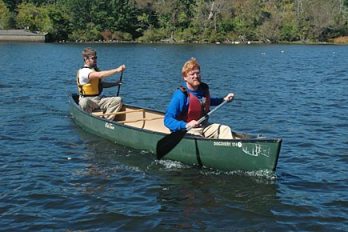 The temperature scale, marked on a thermometer, seems to involve only gradual quantitative changes, and so you might think that all changes related to it would also be gradual and quantitative. But in fact, when certain quantitative thresholds are crossed, then abrupt qualitative changes happen, like a light switch being flipped on. Malcolm Gladwell gives the example that if you tip a canoe sideways slightly, it will right itself; but if you tip the canoe far enough, it will suddenly fill with water, and sink. Alder Fuller gives the example that you can stand a brick on a side, but not on an edge or a corner; when you tip it far enough from one side, it falls onto another side. Fuller explains that, in a similar fashion, nature stays mostly in a few stable configurations, and spends very little time in the intermediate ranges between them.
The temperature scale, marked on a thermometer, seems to involve only gradual quantitative changes, and so you might think that all changes related to it would also be gradual and quantitative. But in fact, when certain quantitative thresholds are crossed, then abrupt qualitative changes happen, like a light switch being flipped on. Malcolm Gladwell gives the example that if you tip a canoe sideways slightly, it will right itself; but if you tip the canoe far enough, it will suddenly fill with water, and sink. Alder Fuller gives the example that you can stand a brick on a side, but not on an edge or a corner; when you tip it far enough from one side, it falls onto another side. Fuller explains that, in a similar fashion, nature stays mostly in a few stable configurations, and spends very little time in the intermediate ranges between them.
 Some processes are very sensitive to changes in temperature. For instance, many forests are now dying due to several direct and indirect consequences of global warming:
Some processes are very sensitive to changes in temperature. For instance, many forests are now dying due to several direct and indirect consequences of global warming:
- First, the trees themselves are directly sensitive to temperature, and an individual tree cannot migrate to a cooler place. When the temperature rises enough, the tree will die.
- Second, higher temperatures are causing drought in some places and floods in other places. Trees are sensitive to water: too little or too much will kill them.
- Third, drought increases the frequency of forest fires.
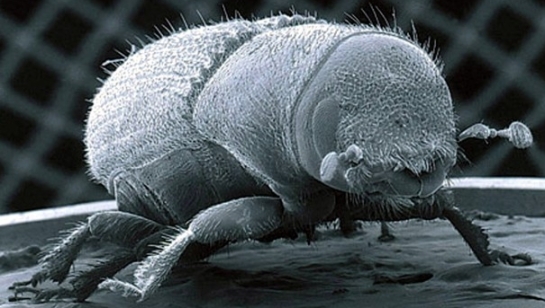 But this fourth cause of tree deaths surprised me: Some tree-killing insects are sensitive to temperature — for instance, the mountain pine beetle, shown here at high magnification. In the past, most of these insects were killed off each winter by the cold, so only a few of the insects came back each spring to bother the trees. But slightly warmer winters recently have allowed enormous numbers of these insects to survive, and entire forests are becoming wastelands as a result.
But this fourth cause of tree deaths surprised me: Some tree-killing insects are sensitive to temperature — for instance, the mountain pine beetle, shown here at high magnification. In the past, most of these insects were killed off each winter by the cold, so only a few of the insects came back each spring to bother the trees. But slightly warmer winters recently have allowed enormous numbers of these insects to survive, and entire forests are becoming wastelands as a result.
c. FEEDBACK (begin video at 12:48)
I’ve saved the biggest nonlinearity for last. Many people are still talking about remedial measures we must take to prevent runaway warming. They don’t realize that runaway warming has already begun, and that they ought to be discussing drastic remedial measures to try to halt the warming before it gets much worse. And they don’t understand how much worse it will get, and how quickly.
Even some climatologists have not understood this. In recent years, climatologists have been repeatedly surprised by the rapidity of global warming. News stories keep saying that once again, climatologists are forced to revise their models upward, because once again the climate has outpaced them. More recently some climatologists have admitted that they had been underestimating the significance of feedback.
 The terminology is unfortunately awkward: I’m obligated to mention that I’ll be talking, not about “negative” feedback, but only about “positive” feedback — and in this case “positive” doesn’t mean “pleasant”; it just means “increasing.” Global warming’s outputs contribute to the inputs — that is, the consequences are also causes, so the process is self-perpetuating. There are now many feedback loops in global warming; here are three:
The terminology is unfortunately awkward: I’m obligated to mention that I’ll be talking, not about “negative” feedback, but only about “positive” feedback — and in this case “positive” doesn’t mean “pleasant”; it just means “increasing.” Global warming’s outputs contribute to the inputs — that is, the consequences are also causes, so the process is self-perpetuating. There are now many feedback loops in global warming; here are three:
- First, as I mentioned earlier, heat melts the world’s ice. The white surfaces of the poles, the glaciers, and the mountaintops are replaced by dark surfaces that reflect less sunlight into outer space and absorb more sunlight, causing more heating,
- Second, the warming is killing trees and phytoplankton. So they cease absorbing carbon dioxide, and they release the carbon that they’ve held. That additional greenhouse gas adds to the warming.
- And third, as temperature rises, the ocean and the “permafrost” release methane that they’ve stored for millions of years. That’s another greenhouse gas, which adds to the warming.
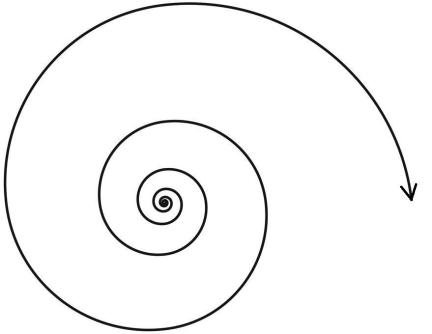 It’s ironic: In recent years we worked hard to explain that the crisis is anthropogenic — that is, caused by human activities — because we wanted to tell people that it might be fixed by changing our human activities. And now we have to start all over again, explaining that our activities have triggered feedback loops that are now self-perpetuating — that is, continuing “in nature,” even without human activities, and so our only hope of survival is through much more drastic changes in our human activities.
It’s ironic: In recent years we worked hard to explain that the crisis is anthropogenic — that is, caused by human activities — because we wanted to tell people that it might be fixed by changing our human activities. And now we have to start all over again, explaining that our activities have triggered feedback loops that are now self-perpetuating — that is, continuing “in nature,” even without human activities, and so our only hope of survival is through much more drastic changes in our human activities.
[exponential growth] (15:41 in the video)
In a positive feedback loop, when the process gets bigger, it has bigger outputs, and those are bigger contributions to the inputs, so the process goes even faster. That is, larger size causes faster growth. In the simplest model, the rate of growth is proportional to the current size. The result is that the process grows exponentially. To see what that means, we need to look at the exponential function. Its graph, sometimes called the “hockey stick,” is shown here in orange.
It starts out tiny and slow at the left end of the graph; there it’s indistinguishable from the horizontal coordinate axis. During that phase it’s so small that you’d hardly notice it, except if you know that there is feedback going on. But then it gradually grows, and eventually becomes large enough to be visible. And soon after that, it’s enormous and growing explosively.
[Addendum: You don’t need to know the equations, so if they bother you, just skip this paragraph. But to impress you, I’m going to mention the equations. They’re covered in the first year of calculus. Feedback is p'(t) = kp(t), which says the rate of change of the system is proportional to the current size of the system. That’s a “problem” in differential equations, whose “solution” is the exponential function: p(t) = p(0)exp(kt). A better explanation is in Wikipedia, which gives some illustrative “stories” about exponential growth. Or watch Albert Bartlett’s video.]
In 2012, global warming became visible to all but the most obstinate deniers, as it brought large crop failures and a super-hurricane. What was formerly called “extreme weather” is coming more frequently and with greater intensity. But we’re not seeing “a new normal” — it’s going to get still worse, and it’s going to get worse faster. We’re now entering the explosive part of the exponential curve. Sure, there will be some days of good weather too, for weather is always a roll of the dice. But climate is the overall tendency — that is, how the dice are loaded — and that’s getting worse.
The graph of the exponential function can be found in any calculus textbook. But the pictures in those books and this video don’t do justice to this function — they don’t convey how rapidly the curve rises after it gets started. We have to crop the picture to fit it into a book page or a computer screen. The curve is already rising quite steeply at the right end of the picture, but it continues getting steeper after that, and getting steeper faster. If we extended the picture just another few inches to the right, we would have to extend it upward for miles; it would quickly become indistinguishable from a vertical straight line.
If global warming really did keep following an exponential curve, within a few more years our planet would be the hottest thing in the universe. Of course, that’s absurd. A better description is this: The exponential curve is a good model until it isn’t. Global warming is accelerating right now at a rate similar to exponential growth, and it will stay that way until some threshold is crossed, ending or at least reducing the feedback — perhaps when all the ice is melted, all the trees and phytoplankton are dead, and all the methane has been released from the ocean and the permafrost. After that, some other model will be applicable, but by then our planet will be as barren as Mars. Mother Nature will be dead, and so will we.
Part 4. Geo-engineering (begin video at 18:53)
 As I’ve already explained, to avoid extinction, we must find some ways of taking large amounts of carbon out of the atmosphere. Until we can do that in a sustainable, long-term fashion, we may need some other sort of temporary technological “fix” to delay warming. Whether it’s high-tech, low-tech, or 100% organic, that’s still “geo-engineering,” and we need to do it soon, because there isn’t much time left.
As I’ve already explained, to avoid extinction, we must find some ways of taking large amounts of carbon out of the atmosphere. Until we can do that in a sustainable, long-term fashion, we may need some other sort of temporary technological “fix” to delay warming. Whether it’s high-tech, low-tech, or 100% organic, that’s still “geo-engineering,” and we need to do it soon, because there isn’t much time left.
A side note: Some people have begun using the term “geo-engineering” to refer to chemtrails — that is, airplanes spraying all sorts of chemicals into the atmosphere, which then drift down to the earth and poison us all. That’s not the kind of “geo-engineering” that I’m advocating.
Some of my green friends think that the solution is to plant a trillion trees. I’d be glad if it were that easy, but I have my doubts. I don’t know if we have the political will to undertake such a large nonprofit endeavor, and at any rate the forests are already dying.
 Many of my green friends are opposed to any solution that is more technological than just planting trees. Their most common criticisms are:
Many of my green friends are opposed to any solution that is more technological than just planting trees. Their most common criticisms are:
Technology got us into this mess, and technology can’t get us out; more technology will just make things worse. Any geo-engineering would be terribly risky. Let’s just “get ourselves back to the garden” and give Mother Nature a chance to heal herself.
(end of criticisms) I disagree with all of that. It was not technology that got us into this mess, but unwise technology, technology driven by short-term profit without concern for the long-term consequences to society and the ecosystem. I vote for using technology more wisely, technology that works with nature, rather than against it. And “getting ourselves back to the garden” is a good idea, but it’s not enough: Human activities have already injured Mother Nature so badly that she can no longer heal herself.
I don’t know what kind of geo-engineering might work. Maybe a new breed of phytoplankton? I don’t have expertise in that area. I would like many experiments tried on a small scale as soon as possible, guided by a nonprofit international consortium of scientists.
 Some people are convinced that we’re doomed, that it’s already too late for any technological fix, and they may be right, but we can’t be sure of that yet. Of course, if we give up now, then we are doomed. But we have at least a little time left before we’re all dead, and we don’t yet know what new understanding of nature we might uncover, and what new technological fixes we might invent, if we work at it. Technologically we’re quite clever — we split the atom, we walked on the moon, and now we have these really cool cellphones. And information is growing exponentially, because that too is a feedback loop. Maybe we’ll find an answer.
Some people are convinced that we’re doomed, that it’s already too late for any technological fix, and they may be right, but we can’t be sure of that yet. Of course, if we give up now, then we are doomed. But we have at least a little time left before we’re all dead, and we don’t yet know what new understanding of nature we might uncover, and what new technological fixes we might invent, if we work at it. Technologically we’re quite clever — we split the atom, we walked on the moon, and now we have these really cool cellphones. And information is growing exponentially, because that too is a feedback loop. Maybe we’ll find an answer.
Part 5. Sociology (begin video at 22:12)
We might find a solution, if together we devote ourselves wholeheartedly to this struggle. But right now our devotion is far from wholehearted. People are carrying on with “business as usual” — the usual entertainments, the usual wars, and so on. Our biggest failure is not in technology, but in sociology. Yes, we’re technologically clever, but clever is not enough — we need to become wise, and soon. Some good ideas need to spread very quickly, to change our political vision. That can happen, but I don’t know whether it will. I’m doing whatever I can to promote the ideas that I think we need. If you like this essay, please recommend it to other people.
And we don’t have time to fix things twice; we need to understand and deal with the underlying problem. That is our culture of selfishness, which our religions have warned us against for thousands of years. I emphasize that the problem is not just selfish individuals, but our entire culture, particularly our economic system, in which we are all participants. It works like this:
Separate property means separate lives. Markets increase inequality, concentrating wealth and power, creating apathy and corruption. Capitalism cannot consider long-term consequences, because CEOs must compete against each other in offering short-term profits to investors. Markets set the prices for resources at their extraction cost, not at cleanup and replacement cost. Market prices don’t reflect externalized costs such as ecocide; ecocide will continue as long as a few people profit from it. Our commons has been privatized, plundered, and carelessly poisoned for quick private profit; that’s why the ecosystem is dying. And by the way, capitalism has other drawbacks too: Privately owned workplaces are undemocratic and alienating, and transform progress into layoffs.
 It has become evident that neither the large-scale carbon sequestration that we need, nor the interim geo-engineering that we need, will happen while the world continues to be run for private profit. To survive, we must change to a different economic system, and we must do it soon.
It has become evident that neither the large-scale carbon sequestration that we need, nor the interim geo-engineering that we need, will happen while the world continues to be run for private profit. To survive, we must change to a different economic system, and we must do it soon.
We must stop basing our society on buying and selling everything. Somehow we need to learn to share, as we all did until 10,000 years ago, and as a few indigenous peoples still do. (And no, I’m not advocating Stalinist dictatorship; there are other ways of sharing.) We have become too numerous to imagine that we can live separately from one another. Admittedly, sharing would be an enormous change — but so would extinction.
Learning to share will end not only ecocide, but also war, poverty, all our worst problems — those are all externalized costs of separateness. Thus, we are actually choosing between death and paradise. Any middle path between those two extremes is ending, because electronic communication is making the destructiveness of capitalism lightning fast and global in reach.
So the ideas that we need to spread are not just about warming. They’re also about how we all relate to nature, and to each other. Join the conversation — we’re all needed on the planning committee.
— — — — — —
18 July 2013, version 1.63. (Original May 24.) Here are links going directly to the various section headings: Two kinds of “more” • Ocean and ice • Stovetop • Nonlinearity • Delays • Tipping points • Feedback (and exponential growth) • Geo-engineering • Sociology